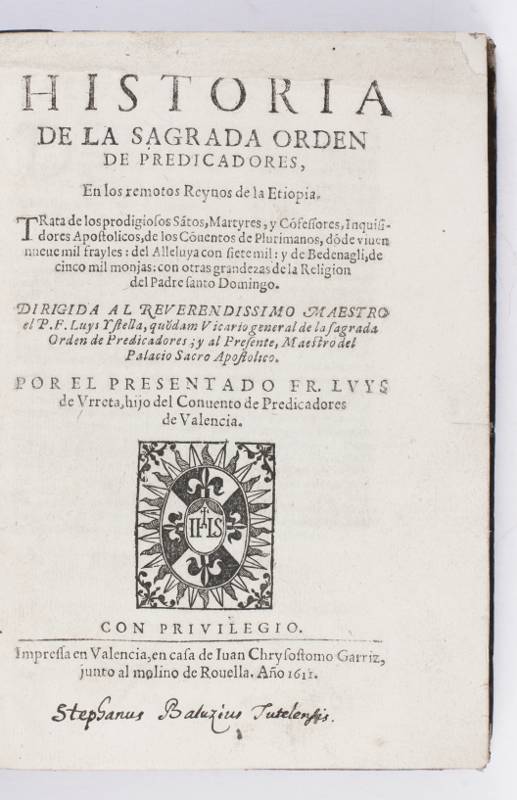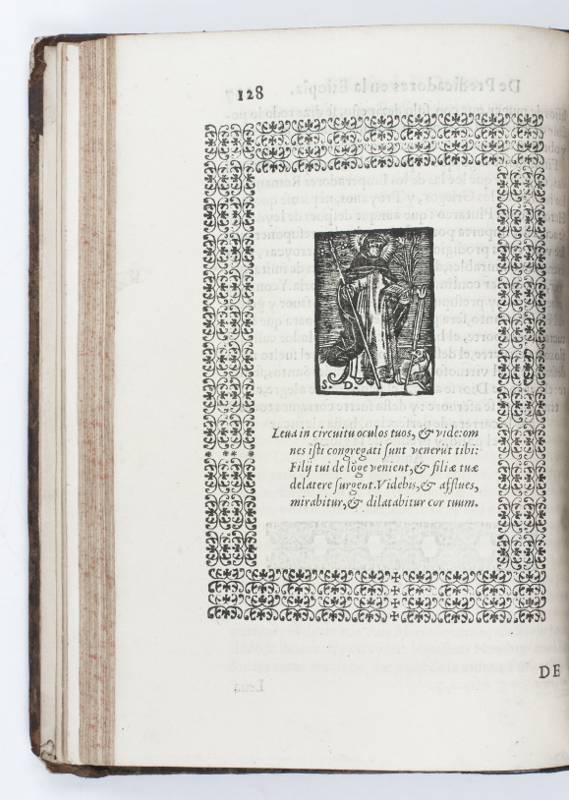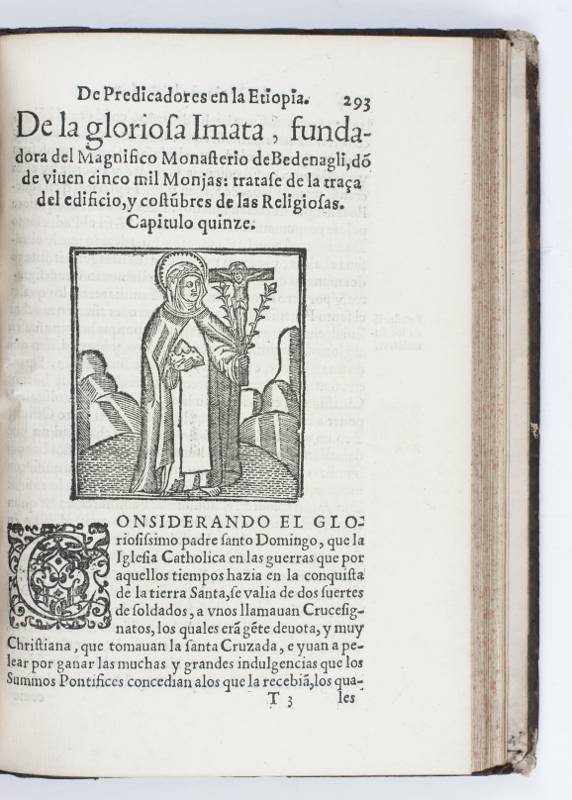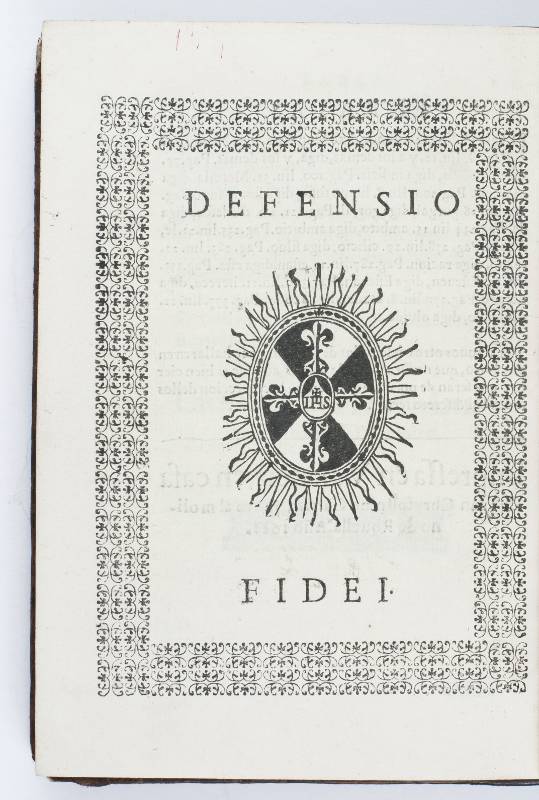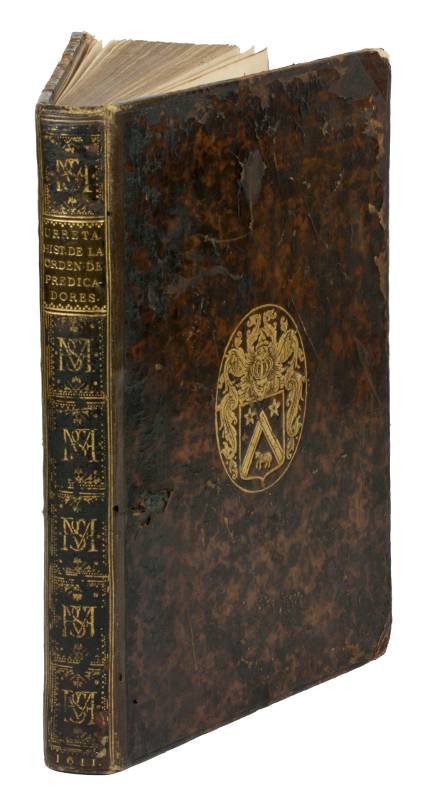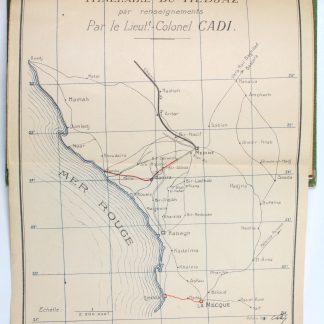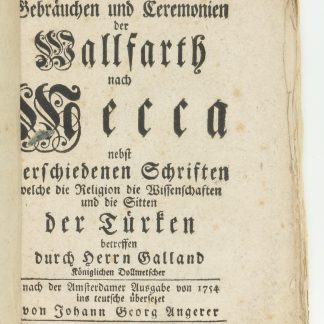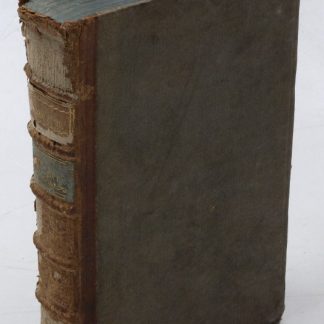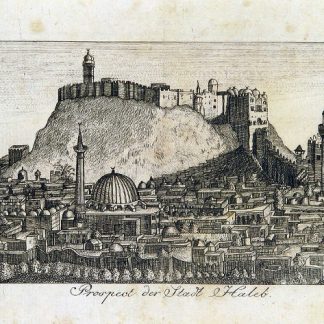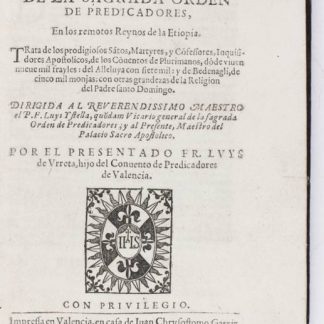A utopian Ethiopia, with information on two Dominicans who entered Mecca around 1580
Historia de la Sagrada Orden de Predicadores en los remotos Reynos de la Etiopia.
Small 4to (21 x 15 cm). (16), 410, (6) pp. With woodcut arms of the Dominican order (with the IHS and cross covering the centre) on title-page, and a variant version on the last page, and 3 woodcuts in text (2 saints and the Cross). Further with 24 decorated woodcut initials in two series, including 11 repeats. Contemporary gold-tooled mottled calf, each board with the coat of arms of the French Seguier family and with the monogram PSMF (Pierre Seguier and his wife Madeleine Fabry) repeated 6 times on the spine, rebacked (on recessed cords) with original gold-tooled backstrip laid-down, a later spine label (between the 1st and 2nd monogram), the year of publication 1611 at the foot of the spine, later endpapers.
€ 35,000.00
First and only edition, in Spanish, of an early work on Ethiopia by the Spanish Dominican monk Luis de Urreta (ca. 1570-1636), who wrote two volumes glorifying his own order's accomplishments in Ethiopia while diminishing those of the Jesuits (his Dominican coat of arms incorporates the IHS with cross, often used by the Jesuits). In the present work, the second of the two, he deals specifically with the Dominican presence in Ethiopia and the history of the Ethiopian saints. Like the first work, the "Historia ecclesiastica" published in 1610, it is a late example of a stream of geographical fantasies where Ethiopia was presented as the wondrous utopian kingdom of Prester John, and Urreta makes the case for an ancient Dominican presence in the country, arguing that they should thus be given precedence over the Jesuits as Catholic missionaries in that country. On pp. 88-90 it gives the information from a report to Pope Gregory XIII (1502-85) on two Dominican monks (Blackfriars) from the Alleluya monastery, who entered Mecca around 1580 and had contact with a Faqih and a Marabout. Everyone who travelled from Africa to Mecca supposedly had to travel by way of the Alleluya monastery as the rest of the region was considered uninhabitable (p. 61).
From the library of Pierre Seguier, Lord Chancellor of France from 1635 to 1672, best known for his appearance in The three musketeers, with his arms and monogram stamped in gold on the binding. And with an owner's inscription of the 17th-century French scholar Etienne Baluze ("Stephanus Baluzius Tutelensis") on title-page. With a faint water stain in the lower margin of four leaves in the introduction, a tiny corner torn from the title-page and two tiny tears in the margins of the main text, otherwise in very good condition. Binding heavily restored, but with the gold-tooled coat of arms still very clear.
Olivier, 271(4). Finger & Piccolino, The shocking history of electric fishes, p. 117; Palau 345993; Salva 3417; cf. Gay, Bibl. de l'Afrique et l'Arabe 2690.

